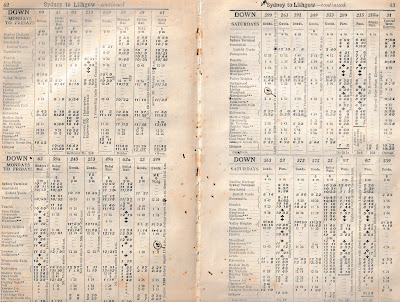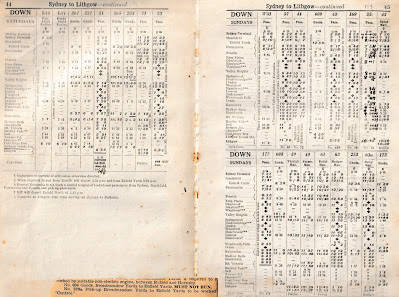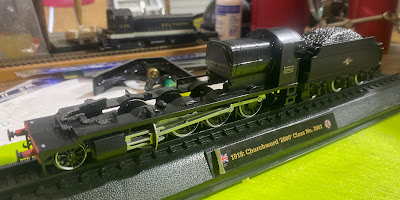While not a lot is happening on the old Plywood Central, great progress has been made since Christmas in what I would like to call my "associated works". Readers may recall my February lament where I noted that 62% of my locomotives never ran around the central west of NSW in the time period I am modelling. Thanks to a whole bunch of Fleabaying, I am now in the happier position of having 76% of my locomotives within the time frame. The Great Asset Reycling Program of 2022 is now complete, which will mean wholesale redundancies at eBay and a lot more photographs of P classes eventually.
I won't bore you with what has left the roster, or what has joined it. However, I do want to note just how lucky we are to have businesses like Casula Hobbies, Auscision, SDS, IDR, Ixion, On-Track Models, Ezi-Kits, SJM, Eureka, Walker Models and the like around. The retailers are pretty damned snappy good too - Casula (again, surely these plugs will get me a discount), Australian Modeller and Trainworld get the gear into the mail within 24 hours of ordering. Add the now gone Austrains and the now less prolific Trainorama and we NSWers are one lucky bunch. with what has been around recently, what is now available and what is planned, I feel like we are on the cusp of a golden age - particularly for those of us on the 'plonker' side of the hobby.
It has not all been up the pointy end of trains too. You just can't model Dubbo without thinking TRCs full of lovely cutlets and steaks. Flogging some Victorian diesels meant that I could invest in the very impressive On Track Models TRCs. Here is one of my new favourite trains. I had been hoping for a 30T but on this day in 1970 it is 4913 doing the honours on a short trippy to the Country Killing Works at Troy Junction.
So, onto Plastics!While the manufacturers and retailers are doing a great job on the rollingstock side, it is depressing to add up what I need to spend on lineside structures and the like to get things looking okay. Just simple things, like buffers, start at $12.50 as a kit posted and go upwards if you want fancier jobs. I am not arguing that we are being gouged - manufacturers and retailers should charge what they need to. It is my fault for modelling somewhere that needs 30+ buffers - so a minimum of $350 of kits. Yes I could build them myself which would take hours and not give me a great deal of satisfaction once I passed the awe of making the first couple (look up the law of diminishing marginal returns). Or could I teach myself something new?
So this is how I ended up with one of these things....
Yes, I am now a 3D printer. Novice level.I did a little research about 3D printing before I took the leap. There seems to be a couple of options for entry-level non-computer literate types like myself. There are 'dunkers' - resin printers which produce fabulous, detailed models but are a bit tricky to calibrate, clean and manage - and a bit smelly. And there are spitters - filament printers which heat up 'plastic' tubing. These produce less detailed models, are slower and produce huge amounts of waste, but are cheaper.
So I went real cheap - the Aldi special. But maybe not so. What Aldi has as a $500 special actually is a rebadged printer which retails for nearly twice that at our favourite national electronics retailer, Jaycar. I like to think of that as value.
I also went filament because, like Sol's mate says, plastics ain't plastics. I am using PLA, which stands for Polylactic Acid Filament. Apparently, it is a plastic material prepared from vegetables, especially cornstarch - that is, it is both biodegradable and renewable. I haven't started sprinkling it on my weeties just yet, but maybe it is not as bad as some other plastics. I guess the test will be if the numerous mice, rates and possums out this way start nibbling my prints I will know its tasty.
The big thing I have learnt is that you don't just learn 3D printing. There are three things you need to learn.
First, you need to design in 3D. I skipped this first step initially because there is a wonderful website called Thingyverse, where wonderful people create and upload designs for you to use for free (you can tip them). And mostly, they also encourage you to play with their designs.
In this Thingyverse community there is a lovely man who goes by the name Badgerbreath who has generously uploaded a whole bunch of terrific NSWGR structures. Mr Badgerbreath has made learning 3D printing an exercise in progress, rather an an exercise in just learning. Yes, I could have been learning by printing off the 4th Troll of Upper Middle Earth, but I pay more attention when learning how to print a NSWGR C1 Toilet/Lamproom. In other words, Mr Badgerbreath, aka David Virgo, has made my entry into 3D modelling interesting and productive, which brings me to the second thing I needed to learn - setting up the print.
Setting up the print is usually done on a free software program which comes with your 3D printer. In my case it is Flashprint 5. In my first few prints I literally took something from Thingyverse, plonked it on the Flashprint table and hit print. The result was something okay but usually welded to the printer's pad. I would then wrestle to extract the model, with varying levels of damage to the model and myself (I stabbed myself with a knife on one occasion). Then slowly I started to understand about positioning and supports, which resulted in prints which came away from the pad easily and without damage.
There are many model railway designers on Thingyverse, and some design in unhelpful scales like O gauge and N gauge. Flashprint has a neat scaling tool which brings everything back to where it should be - HO scale!
The third thing I needed to learn was how to run the 3D printer. This was the easiest part - feeding in the PLA, hooking it up to the WiFi, keeping things tidying around it (printing is a messy business).
These lessons got me to a point where I could happily produce a lot of other people's stuff, paint it up and get on with life. The following photo shows just how much fun you can have in about 2 hours with red PLA - oil drums for an S wagon, a water tank and a small NSW signal box. Total cost of this fun (not including the printer - about $2.00 including electricity).
The best thing about the Covid pandemic for me has been working from home. Instead of sitting in a crappy office trying not to look bored, I can sit at home working, maybe watching Cajon Pass on Virtual Railfan in the background while having the little printer humming away in the background. I see that as me being three times as productive as I was pre-pandemic.But back to building the railway. Based on current kit and RTR prices, there is $5,000+ worth of stuff I would like to build to go alongside the tracks. 3D printing is my way out, firstly thanks to people like David Virgo and secondly, now thanks to free software like Tinkercad. Tinkercad, which is a software program especially designed to get kids into 3D design, is my sort of software. Dead easy to use and fairly intuitive, and comes with 9 million Youtube lessons.
So, thanks to Tinkercad, last night I became a 3D designer. It took about 2 hours of my time, including the printing, but the shell and the base of a standard 20 x 10 foot NSWGR building now exists. Doors and windows will come from Thingyverse, and I need to construct a decent roof and reprint the shell with greater detail, including weatherboards. But once I am happy with it, it will be going up on Thingyverse for the next novice 3Der to have a go with.
And hot off the presses, in the time it has taken to type up this very long blog entry, I have printed off two ash pit buffers - which are a David Virgo design which I have modified a bit. Total cost, about a $1.10.
So, although it is very early days, I can thoroughly recommend having a crack at 3D printing. The NSWGR 3D modelling group on Facebook has a wealth of good stuff to read and nice people who help you get over those initial issues we all seem to have.Hope this lengthy scribble helps at least someone trot down this path.
Cheers,
Don










































